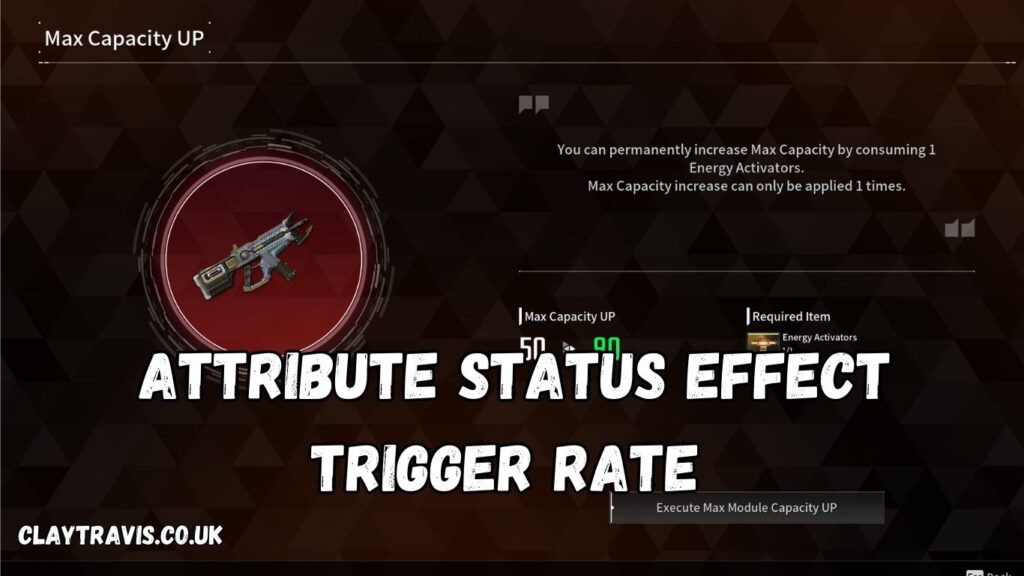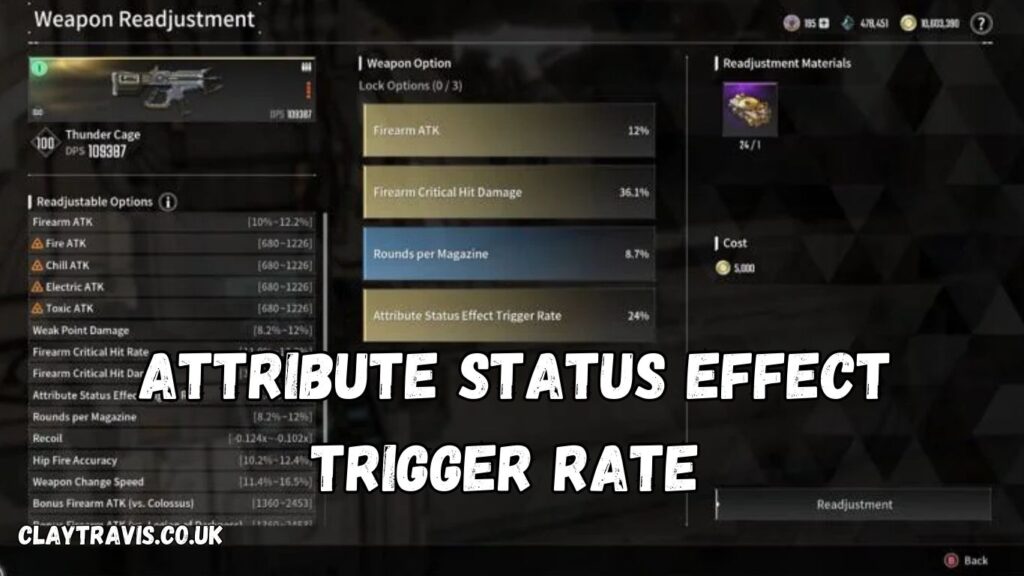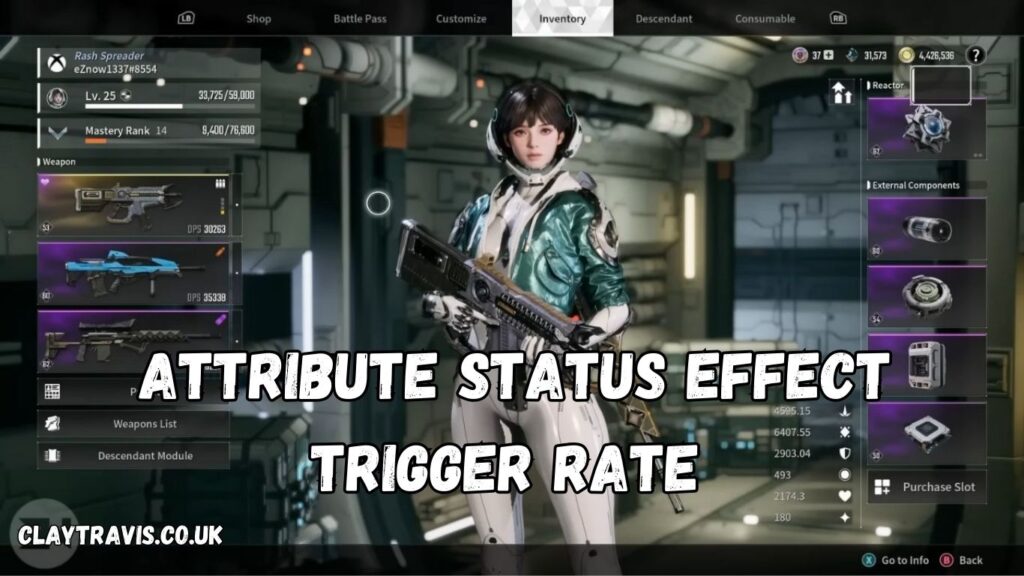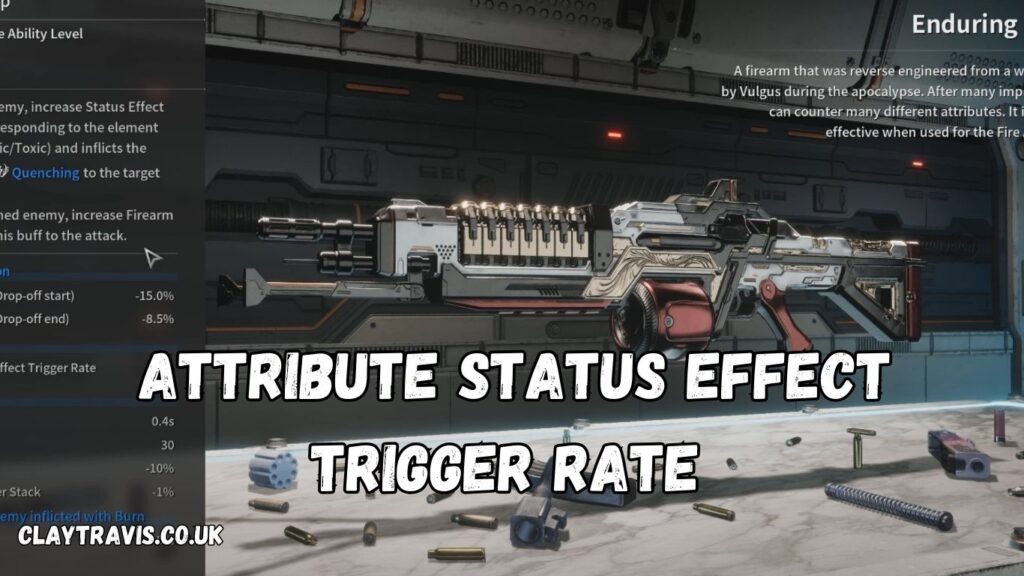Discover how to enhance attribute status effect trigger rate for optimal gameplay. A complete guide with strategies, tips, and expert insights for every level.
Table of Contents
Introduction: The Game-Changing Power of Trigger Rates
In competitive gaming, even the smallest tweaks to your strategy can mean the difference between victory and defeat. Understanding and optimizing your attribute status effect trigger rate is one of those tweaks. It’s the hidden mechanism behind status effects that can turn the tide of a battle—whether it’s inflicting poison on an enemy or buffing your allies in critical moments.

But how does trigger rate work, and what can you do to maximize its impact? This guide covers everything you need to know, from the basics to advanced strategies, ensuring that you unlock the full potential of attribute-based effects in your gameplay.
What Is Attribute Status Effect Trigger Rate?
The attribute status effect trigger rate determines how often status effects tied to specific attributes activate during gameplay. These effects can range from inflicting debuffs on enemies, like slowing their movement, to applying buffs to your own character, like increasing attack power.
Key Features:
- Conditional Probability: Trigger rates are often percentage-based and influenced by stats or gear.
- Varied Applications: Can apply to damage-over-time effects, healing bursts, or crowd control.
- Game-Specific Mechanics: Each game has unique ways to calculate and apply these rates.
How Attribute Status Effect Trigger Rates Work
Simplified Explanation
Think of a status effect trigger rate as rolling a dice every time you land a hit. A higher trigger rate means fewer rolls needed to land on that magical number where the effect activates.
Technical Overview
Trigger rates are usually calculated as a combination of:
- Base Attribute Value: E.g., strength, intelligence, or dexterity.
- Modifier Multipliers: Equipment, buffs, or talents that enhance trigger chances.
- Random Number Generator (RNG): Adds variability to when and how effects occur.
For example, if a fire-based attack has a 25% trigger rate to apply burn, that means one in four attacks, on average, will inflict the effect.

Why Maximizing Trigger Rate Matters
1. Increased Effectiveness in Combat
The more often effects like stun, freeze, or bleed activate, the greater your control over the battlefield.
2. Optimized Resource Management
Efficient trigger rates allow you to conserve energy or cooldowns while maximizing output.
3. Synergistic Builds
Trigger rates can amplify the effectiveness of builds reliant on chaining status effects.
Real-Life Examples of Trigger Rate Optimization
Example 1: Multiplayer Role-Playing Games (RPGs)
A player in an MMORPG increases their poison trigger rate from 10% to 30% through gear upgrades. As a result, their damage-over-time abilities double their output, securing faster dungeon clears.
Example 2: Competitive Battle Arenas
In a MOBA, a player adjusts their equipment to enhance the trigger rate of a crowd-control skill, enabling them to immobilize opponents more consistently during team fights.

How to Maximize Attribute Status Effect Trigger Rate
Step 1: Understand the Mechanics of Your Game
Different games calculate trigger rates differently. Read tooltips, guides, or community forums to understand your game’s formula.
Step 2: Upgrade Relevant Attributes
Focus on boosting base stats or abilities directly linked to trigger rates. For instance:
- Strength may increase physical-based effects.
- Intelligence may enhance magical triggers.
Step 3: Equip and Optimize Gear
Many games include equipment that adds flat or percentage-based bonuses to trigger rates. Prioritize these items during upgrades.
Step 4: Experiment with Builds
Create synergies by pairing high trigger rates with complementary abilities. For example, a bleed effect pairs well with abilities that exploit damaged opponents.
Expert Insights on Trigger Rates
“Understanding trigger rates is crucial for optimizing damage and survivability in any game. It’s all about leveraging probabilities to stack the odds in your favor.” – Alex Harper, Game Mechanics Analyst
Challenges to Consider
- Diminishing Returns: Excessive focus on trigger rates may lead to imbalanced builds.
- RNG Dependency: Even with high trigger rates, randomness can lead to inconsistencies.
Common Mistakes to Avoid
- Ignoring Base Stats: Trigger rates often depend on attributes like strength or agility. Neglecting these can limit effectiveness.
- Overprioritizing Trigger Rates: Don’t sacrifice survivability or core damage for marginal increases.
- Neglecting Synergies: Pairing effects poorly can dilute their overall impact.
The Future of Trigger Rate Optimization
As games evolve, so do their mechanics. Future innovations might include:
- Dynamic Trigger Rates: Adjusted in real-time based on gameplay conditions.
- AI-Driven Optimization: Tools that analyze your playstyle to suggest ideal trigger setups.
FAQs: Attribute Status Effect Trigger Rate
1. How can I calculate my current trigger rate?
Check your game’s tooltip descriptions or use community-built calculators to determine your trigger rates accurately.
2. Are trigger rates affected by enemy resistances?
Yes, many games factor in enemy resistances, reducing the likelihood of certain effects activating.
3. What’s the best way to boost trigger rates quickly?
Focus on acquiring equipment or buffs specifically designed to enhance trigger probabilities.
4. Can trigger rates exceed 100%?
In some games, exceeding 100% ensures guaranteed activation, while others cap rates for balance.
5. Do trigger rates work for passive abilities?
Yes, but only if the passive explicitly mentions a trigger condition.
Conclusion
Mastering your attribute status effect trigger rate can elevate your gameplay, giving you the edge you need in high-pressure scenarios. By understanding the mechanics, optimizing your builds, and leveraging the right strategies, you can turn chance into certainty and dominate the field.
